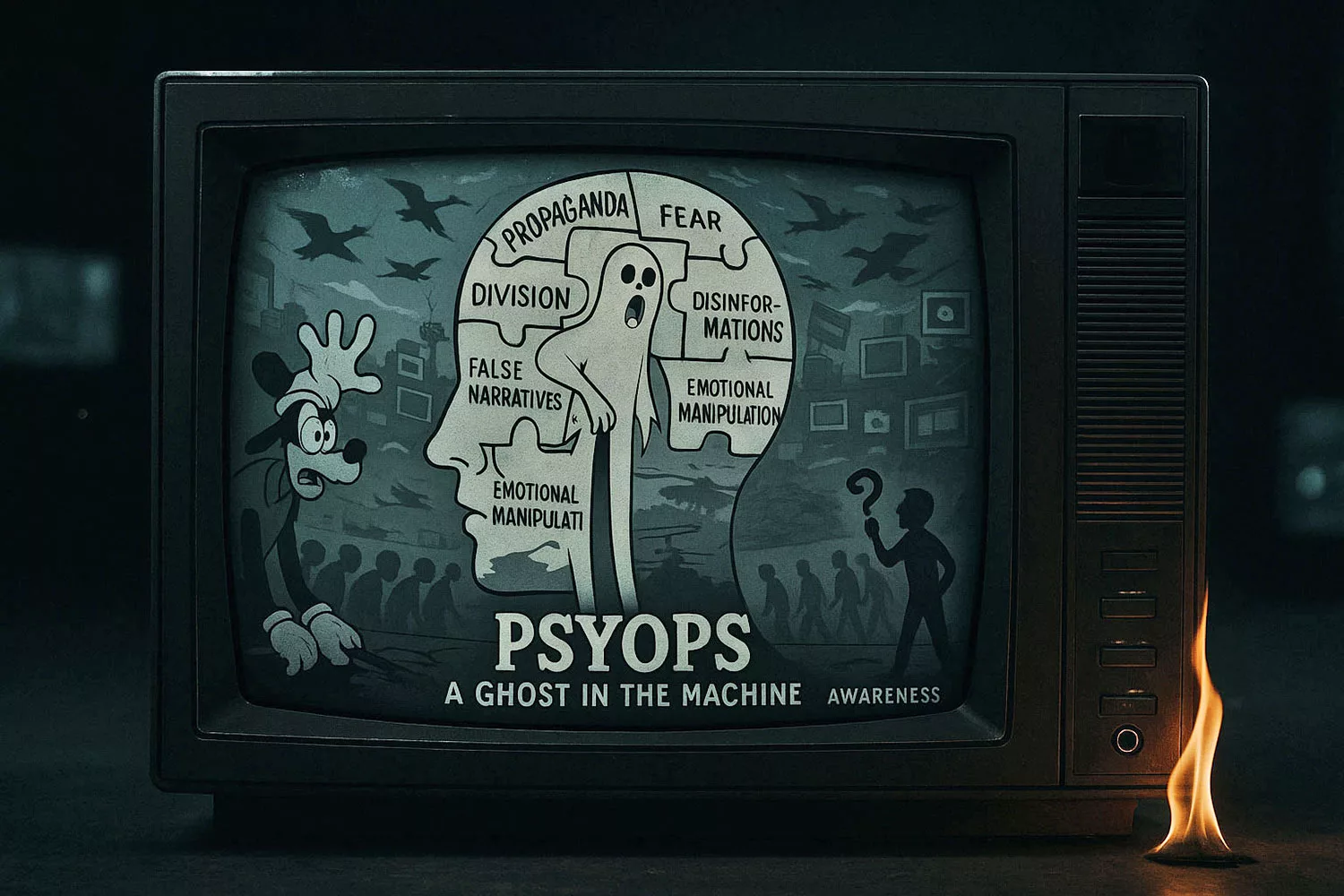When World War II was over, the machine that was created to a supply the war continued and has been a curse to humanity ever since.

by Gabriel
July , 2024
from LibreSolutionsNetwork Website
| Gabriel is a passionate Canadian with a fascination with free software and bottom-up strategies. He runs Libre Solutions Network, a project “to educate people on how to free themselves from dragnet surveillance and information control.” His other website Gabe Rocks has a section ‘Reclaiming Territory in Cyberspace‘ which aims to help people with a general understanding of technology. understanding. You can support and follow Gabriel’s work by subscribing to his Substack page HERE. |
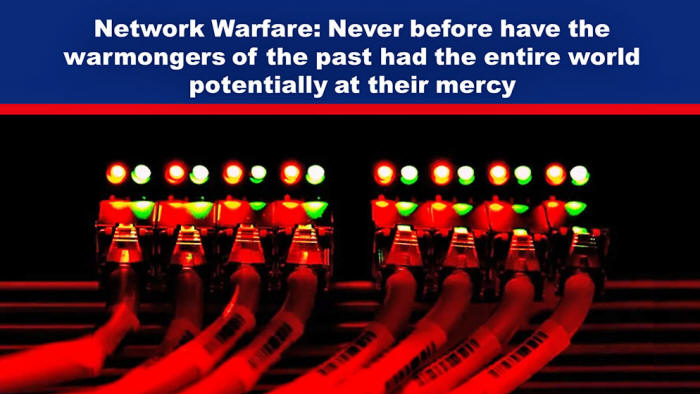
| We are in a challenging time where our nations, free markets, culture and human rights are under attack. The threats we face include physical assaults like warfare, as well as more abstract dangers such as censorship, surveillance and economic warfare. Network warfare has changed the game immensely; it has become a global civil war. Network warfare uses information technology and computer systems to disrupt or disable, as well as to gather intelligence and conduct information operations. This form of warfare is total and unrestricted, encompassing all aspects of participation in society. The distinction between military and civilian targets is blurred and people are increasingly under attack from various powerful forces of which the key players are groups of wealthy “elites” who have accrued wealth and power that rivals nations. We all have the ability and are given the opportunity to either escalate it or be a “peacemaker.” After reading the article below by Gabriel, choose for yourself what role you are playing and what role you would like to play. Let’s not lose touch… Your Government and Big Tech are actively trying to censor the information reported by The Exposé to serve their own needs. Rhoda Wilson July 07, 2024 |
For those interested in preserving our nations, free markets, culture or even basic human rights, we are in an outright harrowing time.
Many of these challenges are direct physical assaults, like warfare, but there is also a wide variety of abstract dangers. Such as censorship, surveillance, economic warfare, or disaster capitalism.
Governments battle against their people for control over policy, and against mega-corporations for control over the public.
Families, communities and even entire nations are stuck in the crossfire of larger plans without clear allies to depend on.
Marshall McLuhan‘s quote has become a tired cliché these days as more and more people recognize that vast swaths of humanity are under attack from seemingly every direction.
“World War 3
is a guerrilla information war
with no division between
military and civilian participation.”
The quote accurately describes what many are feeling, but little else. It leaves behind many questions to ponder further:
- What is the war about?
- Who’s waging the war and against whom?
- Who’s winning?
- Is there a side to join or oppose?
- When will it be over?
- What can we do to protect ourselves?
I don’t pretend to have all the answers, but there are useful guides to follow.
In the words of Spartacus:
“War has always been a convenient human-shredder for the overclass. It has always been this way… It’s a scam. It has always been a scam.”
We’re reminded to consider who has always had a hand in orchestrating and profiting off wars:
the powerful…!
Unfortunately, this isn’t immediately helpful.
Just as the atom bomb changed the balance of power between nations of the world, network warfare, where dynamic super-national forces engage in a global civil war, the game has changed immensely.
As super-wealthy cliques accrue wealth and power that rivals nations, governments themselves can easily become mere strategic objectives in larger games.
Visceral Adventure – War and Democide
24 November 2023
Video also HERE…
Arguably, network warfare has been the essential root of all human warfare throughout history.
The only difference is that both people themselves, and our means of waging war, have the potential to be so disconnected from pre-existing structures of tribes, faiths or nations.
Never before have the warmongers of the past had the entire world potentially at their mercy, as well as the entire population. This form of warfare is total unrestricted warfare and encompasses all aspects of participation in human society.
It has been said that “the person is political,” paired with the acknowledgement that politics is warfare waged through other means, we understand our predicament more clearly.
There is a way to keep this simple, without losing the important details.
People feel under attack, and they are correct to feel this way.
This is because unlike what artificial intelligence (“
AI“) evangelists or “
net zero“.
Malthusians will tell you:
Human beings are the prize.
Not just the prize – but the only prize…
Tyrants of all scopes of ambition realize that the source of all earthly power stems from effective cooperation between human beings.
This requires them to use more and more sophisticated means of coercion to not undermine the value of total control.
The point of sharing this is that you understand what “side you’re on” is a much more complex question than various accidents of birth.
The physical, economic and even digital empires run by many or even a few are competing for dominance over you and others. Lending your strength or allegiance to one may or may not be mutually exclusive with others.
This naturally leads one to wonder if they can opt-out entirely, abandon the game of conquest and live a life of peace.
We can always pray this is possible but it’s important to recognize that we inherit circumstances that make this require much more intense work than merely not choosing to commit overt aggression…
Conceptualizing a Global Civil War
Economic control is no less devastating than bombs or bullets.
Even when direct violence is involved, there is a wide array of ephemeral “slow-kill” means available.
Biowarfare, toxins or even sabotage of essentials are all means to cause mass poverty, suffering and death…
Normalcy bias and plausible deniability allow atrocities to take place without recognition or recourse.
Quiet weapons doing minor cumulative damage can make a significant impact despite going undetected and being difficult to attribute.
To make matters worse, responsibility can be diffused by providing a vast array of self-destructive means of illusory relief.
A Fractal of Suffering
Almost everyone can intuit simple cause and effect, most of the time.
What’s much harder for many people to grasp is “force multipliers”…
Various techniques such as propaganda, spycraft or even financial engineering can make relatively straightforward attacks work through an incomprehensible maze of complexity.
In these circumstances, people only identify the pain, not the source of it.
This can often lead those who don’t wish to feel guilty to justify the existence of that pain for their own comfort.
Overheated Threat Awareness
With attacks coming from seemingly nowhere and everywhere, there is a natural desire to identify threats.
This desire can be leveraged by propagandists and profiteers alike to further their own ends, exhausting the reflex.
As people continuously transform themselves into “the boy who cried wolf” over and over, the populace becomes numb to the sensation of danger.
In circumstances where this numbness has taken hold, people are no longer able to act on their self-preservation instincts, creating easy targets for even the most blatant schemes.
Propaganda
The “information landscape,” which is an abstraction of everyone’s thoughts, perceptions, and available information is a valuable strategic target of tyrants.
The ability to control, restrict or modify the flow of information gives anyone a significant advantage over others.
Pairing this with a sophisticated understanding of people’s natural desires, fears and hopes is a phenomenally powerful weapon to wield against individuals and groups alike.
Beyond merely being a blunt instrument to rally compliance, propaganda can be weaponised to turn people against themselves, even individually.
This immensely toxic pattern mass-produces people who are hurting and who are readily able to hurt others.
Merchants of Death
War can be big business for propagandists, profiteers and plunderers alike.
It provides the state with the pretext to more overtly and more aggressively dominate the financial system.
This leads to the mass financial and social engineering of the economic structure to support the war effort.
To illustrate how US military and intelligence agencies have supported technology startups, consider the case of Keyhole, a small San Francisco-based company that developed software for creating three-dimensional models of the Earth’s surface.
By patching together satellite images and aerial photos, the program could essentially produce a high-resolution map of the entire planet.
In-Q-Tel provided seed funding in 2003 and within two weeks, military and intelligence agencies were reportedly using Keyhole’s software to support the US war in Iraq.
The following year, Google acquired Keyhole for an undisclosed sum. It was renamed Google Earth and today, it is worth approximately $4 billion.
In this case, In-Q-Tel’s investment paid off in monetary terms but the bigger jackpot was the Keyhole program itself, which the CIA and Pentagon immediately deployed in support of military operations.
Like many DIU [Defence Innovation Unit] and In-Q-Tel investments, Keyhole-Google Earth is a dual-use technology that can be adapted for both military and civilian applications.
The vast majority of In-Q-Tel funded startups acquired by large technology companies have created dual-use products, such as,
- AppThwack and Elemental Technologies (acquired by Amazon)
- Acompli and Perceptive Pixel (acquired by Microsoft)
- Tacit Software (acquired by Oracle)
- Cleversafe (acquired by IBM)
- MindMeld (acquired by Cisco)
- QD Vision (acquired by Samsung)
- Pixim (acquired by Sony).
How Big Tech and Silicon Valley are Transforming the Military-Industrial Complex
Watson Institute International & Public Affairs, Brown University
17 April 2024
It’s hard to imagine the long-term incentive changes when an entire industry becomes a creature of the MIC [military-industrial complex].
When states and super-national entities harness such massive economic power to run sprawling computing power to mechanize warfare,
Is there even possibly room for accountability?
How does all this spending impact journalism, academia or even governance?
Cyberwar
When people imagine cyberwars, they often think of shocking news stories of ransom-ware attacks by shady hacker groups.
This is a very serious concern, but another quite troubling development is the digitization of warfare which has accelerated since people’s very lives have become technologically transformed.
The technological dimension of warfare is staggering.
There was a time when the most horrifying technological terror was the atomic bomb.
While not eclipsing its destructive power, various “tools of precision” like drones, surveillance infrastructure or autonomous weapons can be part of the construction of all manner of
The tragic irony is that warfare has generally been quite human.
Warriors throughout history taking up arms against other people across the globe, or even within their own regions, have always had to contend with the atrocities up close.
It seems that we may be on the cusp of witnessing this change in real time.
Surveillance
Data collected for seemingly innocuous purposes can quickly become military intelligence.
There are many non-intuitive uses for even seemingly insignificant data points collected over time.
Using AI from Palantir, an American firm, Ukrainian counter-intelligence fishes for illuminating linkages in disparate pools of data.
Imagine, for instance, an indebted divorcee at risk of losing his flat and custody of his children who opens a foreign bank account and has been detected with his phone near a site that was later struck by missiles.
In addition to such dot-connecting, the AI performs “
social-network analysis.”
If, say, the hypothetical divorcee has strong personal ties to Russia and has begun to take calls from someone whose phone use suggests a higher social status, then AI may increase his
risk score.
The Economist, 8 April 2024
A serious challenge caused by industrialized surveillance is “information asymmetry,” where information is known to few but unknown to a great many.
The first casualty of war is the truth, and this is never more clear when immense amounts of data are collected in secret to be used selectively…
Just as cyber threats blur the lines between military and civilian targets, domestic surveillance becomes more of a priority for troubled regimes.
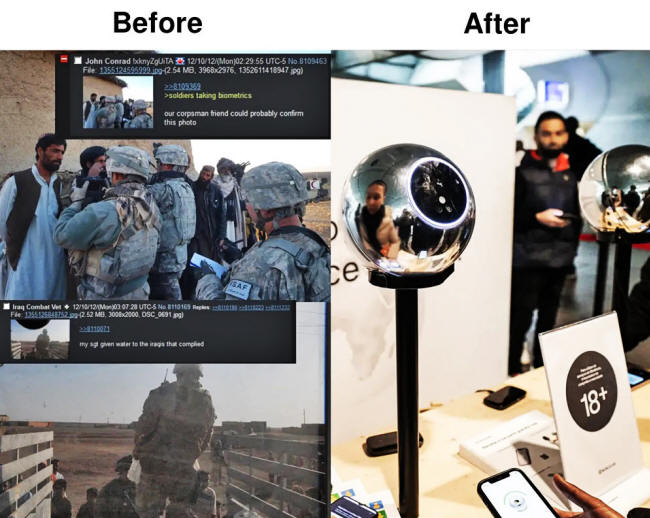
Machine Learning
It would be naive, if not outright dangerous to underestimate the consequences of military use of machine learning, and how it can move to dominate our lives.
Artificial intelligence is its own buzzword, but one must not fall into the trap of thinking it’s all worthless.
The more a problem (or killing) can be accurately reduced to a simple set of variables, the more effective
these tools can become.
Another danger is that many downsides of contemporary AI tools are still serious concerns.
Machine errors can be devastating and must not be used to downplay accountability.
The military-industrial complex (“MIC”) is a terrifying machine.
Media, industry and economy are all impacted directly or indirectly by it.
Between 2022 and 2023 US Department of Defence spending on AI-related contracts jumped from $269 million to $4.3 billion.
It is concerning at minimum that this huge amount of resources in military uses of machine learning effectively drains talent from non-combat uses, which could actually improve people’s lives and solve serious problems.
While it is true that military advancements in technology eventually “trickle down” this only happens after an immense amount of avoidable suffering, it is not without cost either.
Dominating Cyberspace
The Internet, despite its flaws, is a valuable tool for transmitting critical information.
During times of conflict, it is a common tactic for powers to cut off access as a means of restricting information or aid. It is a mistake to believe that an Internet shutdown means that others cannot use their own private (or military) networks to maintain connectivity.
This means that,
Internet shutdowns are a measure that overwhelmingly impacts civilians and may have a much smaller cost for the initiator than one would assume…
Cutting off internet access can also be done in parts.
Sophisticated techniques can be used to deny, filter and even manipulate content given enough resources. In many circumstances, it may be preferable to simply inspect network traffic rather than outright block it.
Interfering with communications changes behavior but silently monitoring generally doesn’t.
Cyber Attacks
Just as the lines between the physical and digital realities blur in our lives, so too do they in warfare.
The more critical systems that depend on inter-connected online services, the more brittle and vulnerable people are to malicious (state-backed or not) entities.
The impact can be devastating with little distinction between civilian and military targets. Because of this, major cyberattacks certainly get the headlines.
The impact of disruptive attacks on infrastructure cannot be overstated but the risk management solutions by the regime can be just as troubling.
Governments have made it clear that information counter to their interests being disseminated itself is seen no different as a “cyberattack.”
In recent years there has been greater emphasis on manipulating minds in the name of safety and national security.
This is a troubling new direction in justifying the elimination of free expression and justifying propaganda operations.
A regime that treats its own citizens as if they were any other computing resource will justify very troubling means to meet its objectives.
As non-combatants, it is not merely enough to demand secure systems.
It is crucial that we do not allow the fear of cyberwars to allow institutions to take over our digital or actual lives. There is immense pressure building for people to set aside digital autonomy or even their civil rights in the name of safety.
One must be cautioned that conceding these, is a road to supporting atrocities without even the pretext of accountability.
By being cow-towed into dependence on the regime the public can very well make themselves unknowing accomplices in what they would otherwise resist with all their might.
Mechanized Murder
As mechanized murder has become more advanced, and various technologies specialize in broader “soft-kill” capabilities, the circumstances become grim in unimaginable ways.
Despite conflicts feeling vastly distant for many North Americans, warfare is as real as it has ever been.
For decades we have seen how many techniques and weapons of war are first tested in remote conflicts and then eventually assimilated into the domestic control structure.
This raises the stakes when it comes to our moral culpability in supporting such actions.
Just as more powerful weapons expand our capacity to unleash terrible atrocities, automated weapons make each decision carry an immense amount of moral weight.
Instead of responsibility being diffused between dozens of people, each reacting in the moment, a single person shoulders the entire responsibility for an orchestra of death and destruction.
The technology on offer may fall far short of Terminator-style robots: in Ukraine, the call to engage with a given target still lies with a human decision-maker.
But for how long?
“If you think of AI as drones autonomously and independently making some decisions to strike or not to strike something, there is no such thing yet,” said Fedorov.
“But I think that there is a certain future for it.”
‘Our Oppenheimer moment’ – In Ukraine, the robot wars have already begun
Politico, 16 May 2024
Becoming a Peacemaker
If you are not already convinced, I would hope that you would consider taking on the role of peacemaker.
The powers that are in play are capable of irreversible damage, not only that but our responsibility has never been greater…
Despite what the overwhelming propaganda would have you believe, we all have an opportunity to push for peace.
By connecting with those around you and working to understand and resolve even minor disputes, greater impacts can build over time.
Bring peaceto first yourself, then those around you, so that you can all work against cruelty in all its many forms…
It is good to be proactive in asking ourselves if our words and actions dehumanize others or build trust and empathy.
Taking action in your own life to withdraw your support and presence from institutions and structures that support senseless violence is highly admirable.
It is your burden to take on the massive undertaking of consciously evaluating how you support or hold accountable various human endeavors without losing faith.
When one sees how bleak things are, it becomes easy to judge.
We are all born into cycles that must be broken. Feeling superior to others or more morally righteous is a prideful pathway to turning into what one wishes to fight.
Genuine compassion, patience and mercy are non-negotiable attributes when it comes to building lasting peace.
It is painful to witness further pain caused by ignorance or arrogance but it is typical that people know not what they do.
Taking the time to understand others’ frame of mind and how to build trust and understanding,
is the only reliable path to making progress in dark times…

by Gareth Porter
November 15, 2018
from TheAmericanConservative Website
| Gareth Porter is an investigative reporter and regular contributor to The American Conservative. He is also the author of Manufactured Crisis: The Untold Story of the Iran Nuclear Scare. |

Eisenhower’s worst nightmare
has come true,
as defense mega-contractors
climb into the cockpit
to ensure we stay overextended.
What President Dwight D. Eisenhower dubbed the “military-industrial complex” has been constantly evolving over the decades, adjusting to shifts in the economic and political system as well as international events.
The result today is a “permanent-war complex,” which is now engaged in conflicts in at least eight countries across the globe, none of which are intended to be temporary.
This new complex has justified its enhanced power and control over the country’s resources primarily by citing ‘threats’ to U.S. security posed by Islamic terrorists.
But like the old military-industrial complex, it is really rooted in the evolving relationship between the national security institutions themselves and the private arms contractors allied with them.
– The first phase of this transformation was a far-reaching privatization of U.S. military and intelligence institutions in the two decades after the Cold War, which hollowed out the military’s expertise and made it dependent on big contractors, think,
- Halliburton
- Booz Allen Hamilton
- CACI
– The second phase began with the global “
war on terrorism,” which quickly turned into a permanent war, much of which revolves around the use of drone strikes.
The drone wars are uniquely a public-private military endeavor, in which major arms contractors are directly involved in the most strategic aspect of the war.
And so the drone contractors – especially the dominant General Atomics – have both a powerful motive and the political power, exercised through its clients in Congress, to ensure that the wars continue for the indefinite future.
***
The privatization of military and intelligence institutions began even before the end of the Cold War.
But during the 1990s, both Congress and the Bush and Clinton administrations opened the floodgates to arms and intelligence contractors and their political allies.
The contracts soon became bigger and more concentrated in a handful of dominant companies. Between 1998 and 2003, private contractors were getting roughly half of the entire defense budget each year.
The 50 biggest companies were getting more than half of the approximately $900 billion paid out in contracts during that time, and most were no-bid contracts, sole sourced, according to the Center for Public Integrity.
The contracts that had the biggest impact on the complex were for specialists working right in the Pentagon.
The number of these contractors grew so rapidly and chaotically in the two decades after the Cold War that senior Pentagon officials did not even know the full extent of their numbers and reach.
In 2010, then-secretary of defense Robert M. Gates even confessed to Washington Post reporters Dana Priest and William M. Arkin that he was unable to determine how many contractors worked in the Office of the Secretary of Defense, which includes the entire civilian side of the Pentagon.
Although legally forbidden from assuming tasks that were “inherent government functions,” in practice these contractors steadily encroached on what had always been regarded as government functions.
Contractors could pay much higher salaries and consulting fees than government agencies, so experienced Pentagon and CIA officers soon left their civil service jobs by the tens of thousands for plum positions with firms that often paid twice as much as the government for the same work.
That was especially true in the intelligence agencies, which experienced a rapid 50 percent workforce increase after 9/11. It was almost entirely done with former skilled officers brought back as contractor personnel.
Even President Barack Obama’s CIA director Leon Panetta admitted to Priest and Arkin that the intelligence community had for too long,
“depended on contractors to do the operational work” that had always been done by CIA employees, including intelligence analysis, and that the CIA needed to rebuild its own expertise “over time.”
By 2010, “core contractors” – those who perform such functions as collection and analysis – comprised at least 28 percent of professional civilian and military intelligence staff, according to a fact sheet from the Office of the Director of National Intelligence.
The dependence on the private sector in the Pentagon and the intelligence community had reached such a point that it raised a serious question about whether the workforce was now,
“obligated to shareholders rather than to the public interest,” as Priest and Arkin reported.
And both Gates and Panetta acknowledged to them their concerns about that issue.
Powerfully reinforcing that privatization effect was the familiar revolving door between the Pentagon and arms contractors, which had begun turning with greater rapidity.
A 2010 Boston Globe investigation showed that the percentage of three- and four-star generals who left the Pentagon to take jobs as consultants or executives with defense contractors, which was already at 45 percent in 1993, had climbed to 80 percent by 2005 – an 83 percent increase in 12 years.
The incoming George W. Bush administration gave the revolving door a strong push, bringing in eight officials from Lockheed Martin – then the largest defense contractor – to fill senior policymaking positions in the Pentagon.
- The CEO of Lockheed Martin, Peter Teets, was brought in to become undersecretary of the Air Force and director of the National Reconnaissance Office (where he had responsibility for acquisition decisions directly benefiting his former company).
- James Roche, the former vice president of Northrop Grumman, was named secretary of the Air Force.
- A former vice president of General Dynamics, Gordon R. England, was named the secretary of the Navy.
- In 2007, Bush named rear admiral J. Michael McConnell as director of national intelligence. McConnell had been director of the National Security Agency from 1992 to 1996, then became head of the national security branch of intelligence contractor Booz Allen Hamilton.
Not surprisingly McConnell energetically promoted even greater reliance on the private sector, on the grounds that it was supposedly more efficient and innovative than the government.
In 2009 he returned once again to Booz Allen Hamilton as vice chairman.
The Pentagon and the intelligence agencies thus morphed into a new form of mixed public-private institutions, in which contractor power was greatly magnified.
To some in the military it appeared that the privateers had taken over the Pentagon.
As a senior U.S. military officer who had served in Afghanistan commented to Priest and Arkin,
“It just hits you like a ton of bricks when you think about it. The Department of Defense is no longer a war-fighting organization, it’s a business enterprise.”
***
The years after 9/11 saw the national security organs acquire new missions, power, and resources – all in the name of a “War on Terror,” aka “the long war.”
The operations in Afghanistan and Iraq were sold on that premise, even though virtually no al Qaeda remained in Afghanistan and none were in Iraq until long after the initial U.S. invasion.
The military and the CIA got new orders to pursue al Qaeda and affiliated groups in Pakistan, Yemen, Somalia, and several other African countries, parlaying what the Bush administration called a “generational war” into a guarantee that there would be no return to the relative austerity of the post-Cold War decade.
Drone strikes against targets associated with al Qaeda or affiliated groups became the common feature of these wars and a source of power for military and intelligence officials.
The Air Force owned the drones and conducted strikes in Afghanistan, but the CIA carried them out covertly in Pakistan, and the CIA and the military competed for control over the strikes in Yemen.
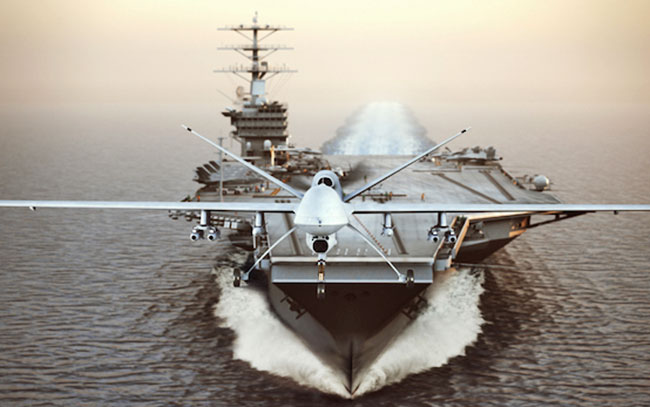
Shutterstock/Digital Storm
The early experience with drone strikes against “high-value targets” was an unmitigated disaster.
From 2004 through 2007, the CIA carried out 12 strikes in Pakistan, aimed at high-value targets of al Qaeda and its affiliates. But they killed only three identifiable al Qaeda or Pakistani Taliban figures, along with 121 civilians, based on analysis of news reports of the strikes.
But on the urging of CIA Director Michael Hayden, in mid-2008 President Bush agreed to allow “signature strikes” based merely on analysts’ judgment that a “pattern of life” on the ground indicated an al Qaeda or affiliated target.
Eventually it became a tool for killing mostly suspected rank-and-file Afghan Taliban fighters in both Pakistan and Afghanistan, particularly during the Obama administration, which had less stomach and political capital for outright war and came to depend on the covert drone campaign.
This war was largely secret and less accountable publicly. And it allowed him the preferable optics of withdrawing troops and ending official ground operations in places like Iraq.
Altogether in its eight years in office, the Obama administration carried out a total of nearly 5,000 drone strikes – mostly in Afghanistan – according to figures collected by the Bureau of Investigative Journalism.
But between 2009 and 2013, the best informed officials in the U.S. government raised alarms about the pace and lethality of this new warfare on the grounds that it systematically undermined the U.S. effort to quell terrorism by creating more support for al Qaeda rather than weakening it.
Some mid-level CIA officers opposed the strikes in Pakistan as early as 2009, because of what they had learned from intelligence gathered from intercepts of electronic communications in areas where the strikes were taking place: they were infuriating Muslim males and making them more willing to join al Qaeda.
In a secret May 2009 assessment leaked to the Washington Post, General David Petraeus, then commander of the Central Command, wrote,
“Anti-U.S. sentiment has already been increasing in Pakistan… especially in regard to cross-border and reported drone strikes, which Pakistanis perceive to cause unacceptable civilian casualties.”
More evidence of that effect came from Yemen.
A 2013 report on drone war policy for the Council on Foreign Relations found that membership in al Qaeda in the Arabian Peninsula in Yemen grew from several hundred in 2010 to a few thousand members in 2012, just as the number of drone strikes in the country was increasing dramatically – along with popular anger toward the United States.
Drone strikes are easy for a president to support.
They demonstrate to the public that he is doing ‘something’ concrete about terrorism, thus providing political cover in case of another successful terrorist attack on U.S. soil.
Donald Trump has shown no interest in scaling back the drone wars, despite openly questioning the stationing of troops across the Middle East and Africa.
In 2017 he approved a 100 percent increase in drone strikes in Yemen and a 30 percent increase in Somalia above the totals of the final year of the Obama administration.
And Trump has approved a major increase in drone strikes in Afghanistan, and has eliminated rules aimed at reducing civilian casualties from such strikes.
Even if Obama and Trump had listened to dissenting voices on the serious risks of drone wars to U.S. interests, however, another political reality would have prevented the United States from ending the drone wars:
the role of the private defense contractors and their friends on Capitol Hill in maintaining the status quo.
***
Unlike conventional bombing missions, drone strikes require a team to watch the video feeds, interpret them, and pass on their conclusions to their mission coordinators and pilots.
By 2007 that required more specialists than the Air Force had available.
Since then, the Air Force has been working with military and intelligence contractors to analyze full-motion videos transmitted by drones to guide targeting decisions.
BAE, the third-ranking Pentagon contractor according to defense revenues, claims that it is the “leading provider” of analysis of drone video intelligence, but in the early years the list of major companies with contracts for such work also included,
- Booz Allen Hamilton
- L-3 Communications
- SAIC (now Leidos)
These analysts were fully integrated into the “kill chain” that resulted, in many cases, in civilian casualties.
In the now-famous case of the strike in February 2010 that killed at least 15 Afghan civilians, including children, the “primary screener” for the team of six video analysts in Florida communicating via a chat system with the drone pilot in Nevada was a contract employee with SAIC.
That company had a $49 million multi-year contract with the Air Force to analyze drone video feeds and other intelligence from Afghanistan.
The pace of drone strikes in Afghanistan accelerated sharply after U.S. combat ended formally in 2014. And that same year, the air war against ISIS began in Iraq and Syria. The Air Force then began running armed drones around the clock in those countries as well.
The Air Force needed 1,281 drone pilots to handle as many “combat air patrols” per day in multiple countries. But it was several hundred pilots short of that objective.
To fulfill that requirement the Air Force turned to General Atomics – maker of the first armed drone, the Predator, and a larger follow-on, the MQ-9 Reaper – which had already been hired to provide support services for drone operations on a two-year contract worth $700 million.
But in April 2015 the Air Force signed a contract with the company to lease one of its Reapers with its own ground control station for a year. In addition, the contractor was to provide the pilots, sensor operators, and other crew members to fly it and maintain it.
The pilots, who still worked directly for General Atomics, did everything Air Force drone pilots did except actually fire the missiles.
The result of that contract was a complete blurring of the lines between the official military and the contractors hired to work alongside them. The Air Force denied any such blurring, arguing that the planning and execution of each mission would still be in the hands of an Air Force officer.
But the Air Force Judge Advocate General’s Office had published an article in its law review in 2010 warning that even the analysis of video feeds risked violating international law prohibiting civilian participation in direct hostilities.
A second contract with a smaller company, Aviation Unlimited, was for the provision of pilots and sensor operators and referred to “recent increased terrorist activities,” suggesting that it was for anti-ISIS operations.
The process of integrating drone contractors into the kill chain in multiple countries thus marked a new stage in the process of privatizing war in what had become a permanent war complex.
After 9/11, the military became dependent on the private sector for everything from food, water, and housing to security and refueling in Iraq and Afghanistan.
By 2009 contractors began outnumbering U.S. troops in Afghanistan and eventually became critical for continuing the war as well.
In June 2018, the DoD announced a $40 million contract with General Atomics to operate its own MQ-9 Reapers in Afghanistan’s Helmand Province.
The Reapers are normally armed for independent missile strikes, but in this case, the contractor-operated Reapers were to be unarmed, meaning that the drones would be used to identify targets for Air Force manned aircraft bombing missions.
***
There appears to be no braking mechanism for this accelerating new reality.
U.S. government spending on the military drone market, which includes not only procurement and research and development for the drones themselves, but the sensors, modifications, control systems, and other support contracts, stood at $4.5 billion in 2016, and was expected to increase to $13 billion by 2027.
General Atomics is now the dominant player in the arena.
This kind of income translates into political power, and the industry has shown its muscle and more than once prevented the Pentagon from canceling big-ticket programs, no matter how unwanted or wasteful.
They have the one-two punch of strategically focused campaign contributions and intensive lobbying of members with whom they have influence.
This was most evident between 2011 and 2013, after congressionally mandated budget reductions cut into drone procurement.
The biggest loser appeared to be Northrop Grumman’s “Global Hawk” drone, designed for unarmed high-altitude intelligence surveillance flights of up to 32 hours.
By 2011 the Global Hawk was already 25 percent over budget, and the Pentagon had delayed the purchase of the remaining planes for a year to resolve earlier failures to deliver adequate “near real time” video intelligence.
After a subsequent test, however, the Defense Department’s top weapons tester official reported in May 2011 that the Global Hawk was,
“not operationally effective” three fourths of the time, because of “low vehicle reliability.”
He cited the,
“failure” of “mission central components” at “high rates.”
In addition, the Pentagon still believed the venerable U-2 Spy plane – which could operate in all weather conditions, unlike the Global Hawk – could carry out comparable high-altitude intelligence missions.
As a result, the DoD announced in 2012 that it would mothball the aircraft it had already purchased and save $2.5 billion over five years by foregoing the purchase of the remaining three drones.
But that was before Northrop Grumman mounted a classic successful lobbying campaign to reverse the decision.
That lobbying drive produced a fiscal year 2013 defense appropriations law that added $360 million for the purchase of the final three Global Hawks. In Spring 2013, top Pentagon officials indicated that they were petitioning for “relief” from congressional intent.
Then the powerful chairman of the House Armed Services Committee, California Republican Buck McKeon, and a member of the House Appropriations Defense Subcommittee, Democrat Jim Moran of Virginia, wrote a letter to incoming Defense Secretary Chuck Hagel on May 13, 2013, pressing him to fund the acquisition of the Global Hawks.
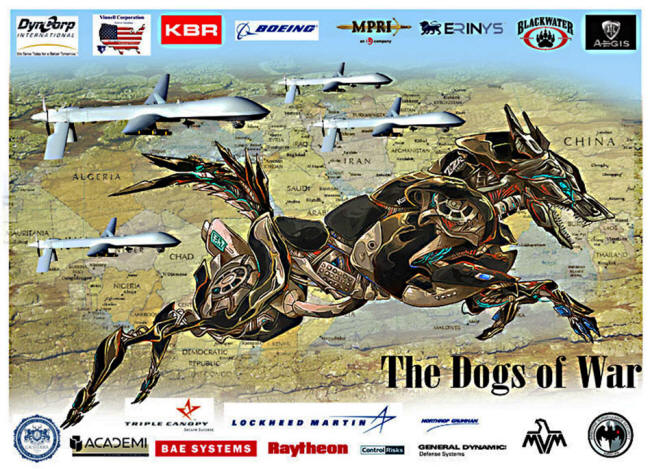
The Pentagon finally caved…
The Air Force issued a statement pledging to acquire the last three Northrop Grumman spy planes, and in early 2014, Hagel and Dempsey announced that they would mothball the U-2 and replace it with the Global Hawk.
Northrop spent nearly $18 million on lobbying in 2012 and $21 million in 2013, fielding a phalanx of lobbyists determined to help save Global Hawk. It got what it wanted.
Meanwhile, Northrop’s political action committee had already made contributions of at least $113,000 to the campaign committee of House Armed Services Committee Chairman McKeon, who also happened to represent the Southern California district where Northrop’s assembly plant for the Global Hawk is located.
Representative Moran, the co-author of the letter with McKeon, who represented the northern Virginia district where Northrop has its headquarters, had gotten $22,000 in contributions.
Of course Northrop didn’t ignore the rest of the House Armed Services Committee:
they were recipients of at least $243,000 in campaign contributions during the first half of 2012.
***
The Northrop Grumman triumph dramatically illustrates the power relationships underlying the new permanent-war complex.
In the first half of 2013 alone, four major drone contractors,
- General Atomics
- Northrop Grumman
- Lockheed Martin
- Boeing,
… spent $26.2 million lobbying Congress to pressure the executive branch to keep the pipeline of funding for their respective drone systems flowing freely.
The Center for the Study of the Drone observed,
“Defense contractors are pressuring the government to maintain the same levels of investment in unmanned systems even as the demand from the traditional theatres such as Afghanistan dies down.”
Instead of dying down, the demand from drones in Afghanistan has exploded in subsequent years.
By 2016, the General Atomics Reapers had already become so tightly integrated into U.S. military operations in Afghanistan that the whole U.S. war plan was dependent on them.
In the first quarter of 2016 Air Force data showed that 61 percent of the weapons dropped in Afghanistan were from the drones.
In the new permanent-war complex the interests of the arms contractors have increasingly dominated over the interests of the civilian Pentagon and the military services, and dominance has became a new driving force for continued war.
Even though those bureaucracies, along with the CIA, seized the opportunity to openly conduct military operations in one country after another, the drone war has introduced a new political dynamic into the war system:
the drone makers who have powerful clout in Congress can use their influence to block or discourage an end to the permanent war – especially in Afghanistan – which would sharply curtail the demand for drones.
Eisenhower was prophetic in his warning about the threat of the original complex (which he had planned to call the military-industrial-congressional complex) to American democracy.
But that original complex, organized merely to maximize the production of arms to enhance the power and resources of both the Pentagon and their contractor allies, has become a much more serious menace to the security of the American people than even Eisenhower could have anticipated.
Now it is a system of war that powerful arms contractors and their bureaucratic allies may have the ability to maintain indefinitely…






